The best thing about food photography is that you can do it anywhere. You don’t even need to carry heavy gear with you. You can get fantastic food photography with your iPhone!
So how do you take pictures of food? We have 15 tips for delicious iPhone food photography below!
The most crucial advice for iPhone food photography is to use natural light. Artificial lights might mess up the colors of your subject. Using flashlight can result in annoying reflections.
By shooting in natural light, you can avoid those mistakes. Natural light will provide your food scene with the most accurate colors.
Take food photos outside or close to a window. If the natural light is too strong, you can use a piece of paper or a white curtain to diffuse it.
Avoid shooting in the bright sun because you can end up with harsh shadows. Choosing an overcast day for your food photography session is a great idea. The clouds create a diffused and soft light which enhances your food photo.
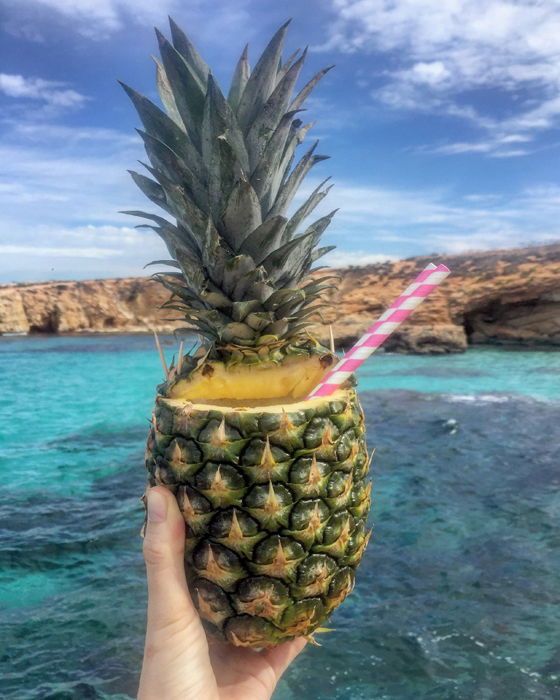
Photo credit Dora Jokkel
Using natural light means that you have to control the shadows. Sometimes strong shadows can create exciting effects. But in general, try to avoid taking food photos in harsh shadows. It dominates the scene and draws our attention away from your subject.
Sometimes you have no choice but to shoot in bright sunshine. Use a reflector or a piece of paper to soften the harsh shadows. Place it on the side where the shadows appear.
Your reflector should be facing the sun. This way, the sunlight bounces back to onto your subject and softens the shadows.
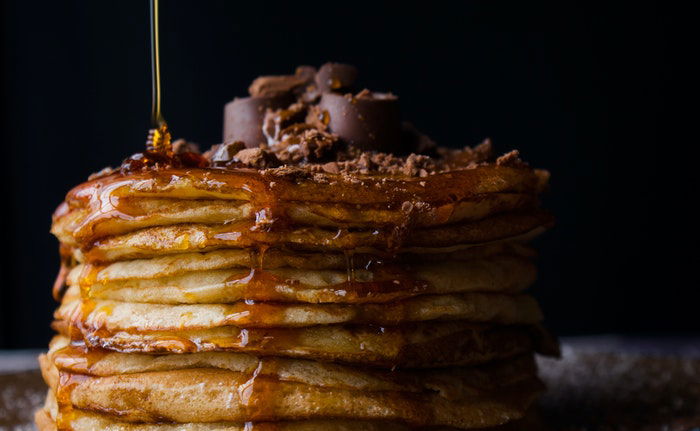
The iPhone’s camera app has a lot of features that many of us fail to discover. They can be very handy when it comes to iPhone food photography.
Your iPhone has the gridlines feature, which can help you create better compositions. You can turn it on by going to Settings and choosing the Camera app. Then switch on the Grid feature, and you have your gridlines.
You can also adjust the exposure to correct the brightness of your photos. Your iPhone does it for you automatically, but it’s not always right.
To adjust it, tap on the sun icon that pops up next to the yellow focusing box. Slide your finger up or down the screen to adjust exposure.
Do you want to avoid tricky lighting conditions? Use the HDR mode to get the correct exposure. Your iPhone will take three pictures with various exposure levels. There will be one regular, one darker and another brighter photo. Then your iPhone combines them into one final photo.
If you have an iPhone 7 plus or newer models, your device has a Portrait Mode. The iPhone’s camera detects the background and blurs it. You can experiment with Portrait Mode for your food photography too.
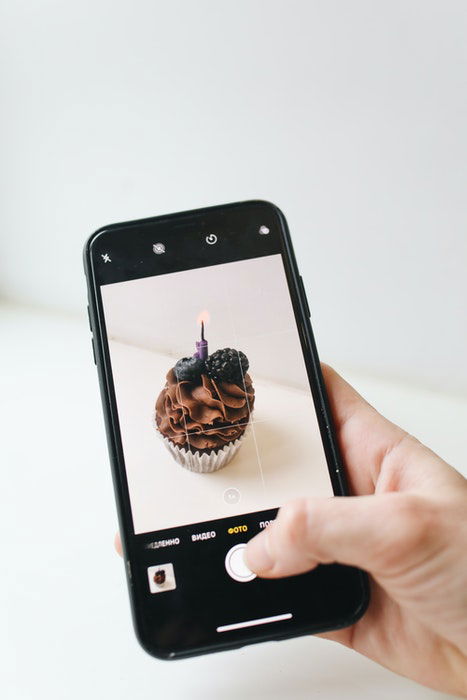
Choosing the appropriate background is essential for iPhone food photography. The background should be simple and tidy. I’ve seen many food photos fail because the photographer forgot to declutter the garden where the photoshoot took place.
The viewer’s attention will wander from your food to the background if it’s too colorful or complicated. Make sure that the background complements your subject and doesn’t steal the spotlight.
A simple, pastel-colored or neutral background works like magic. Wooden backdrops look very well because they convey a natural feeling.
You can also use a tablecloth or a tea towel as a background. Checkered, floral or vintage patterns are popular in food photography.
You may use seasonal backdrops for Christmas or Halloween-themed food photography.
Check out my of the gelato below. I was eating a scoop of caramel ice cream and took the photo using the shop’s wall as a background. They had similar shades of color, which made the photo simple and harmonised.
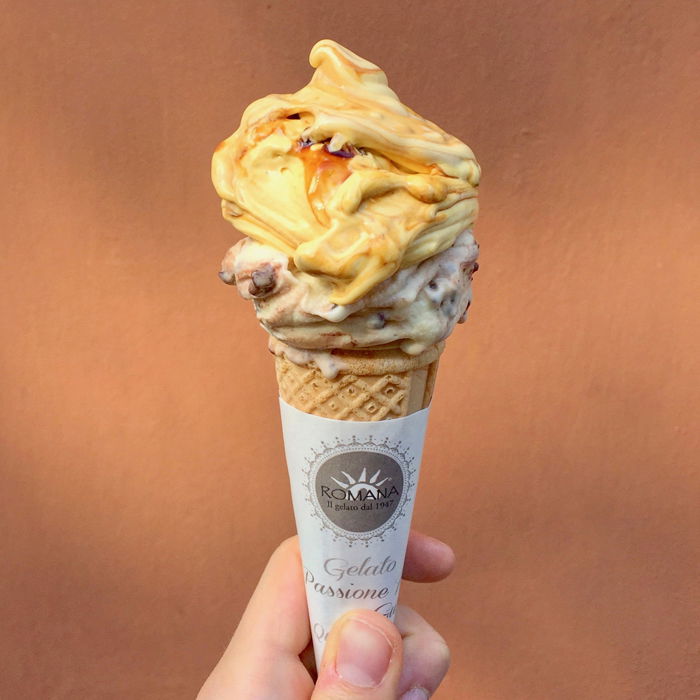
Photo credit Dora Jokkel
Sometimes, you can break the rule of using simple backgrounds. You look down in a café, and the tiles have an amazing pattern.
Why not take a shot of your espresso with the floor as the backdrop? This works well with food items that are very simple or almost boring without the backdrop.
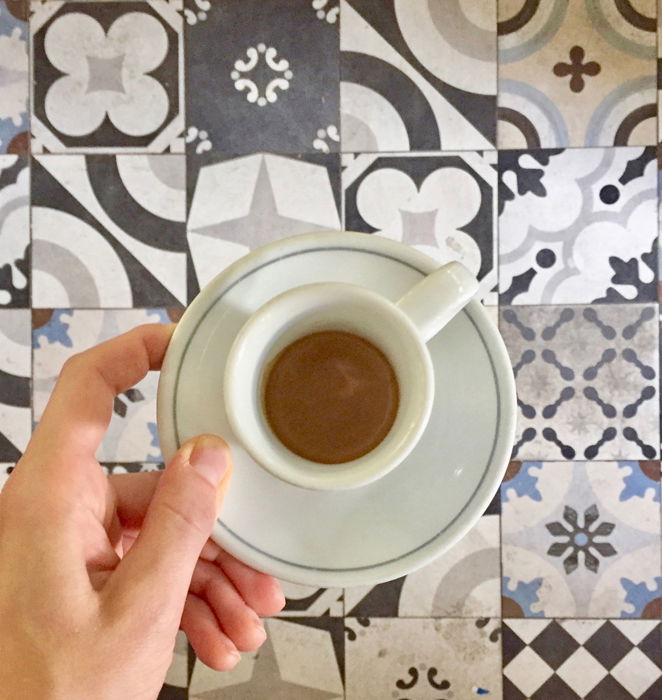
Photo credit Dora Jokkel
In food photography, colors are your best friends. They represent flavours and freshness. You can use them in various ways.
If you use shades of the same color, you can create soft and calming food photos. While applying contrasting colors will result in vivid and dynamic pictures.
People always associate certain colors with specific flavours or food items. For example, we associate pastel colors with sweets and cakes.
There are studies stating that color influences taste perception. You can use the scientific results for your advantage in food photography. Vivid yellow lemons trick our brain, and we start to salivate only by looking at the food photos.
This might sound obvious but never use colors that don’t create positive associations. A khaki smoothie might be super healthy, but it doesn’t look very appealing.
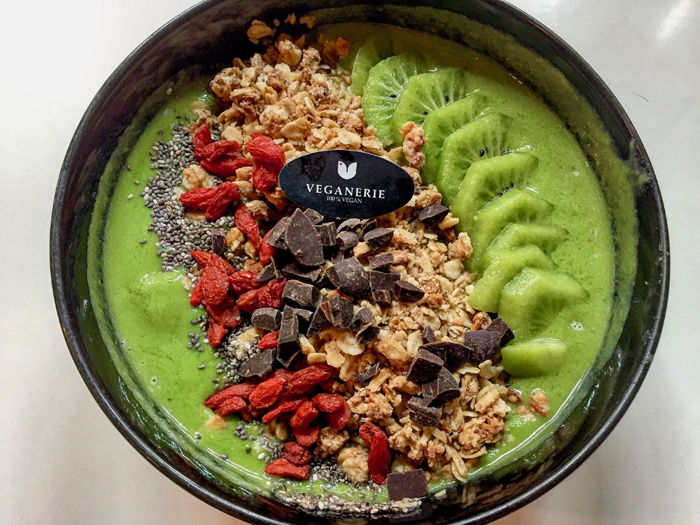
Photo credit Dora Jokkel
Professional food photography requires food stylist skills. The way you position your food subject can have astonishing effects on your final image.
Pay attention to creating an appealing composition. Use the rule of thirds or the golden ratio to get the best setup.
Make sure that you arrange everything in a nice and attractive way. You might have to cut up some items or use tweezers to pick up small objects.
Add some fresh herbs or crunchy toppings to get more exciting images. You can also start to shoot dishes that need decorating items in general. Smoothie bowls are healthy, and there are a thousand ways to design them.
If you are in a fine dining restaurant, the food is often represented in an impressive way. But you still need to pay attention to the composition. Do you shoot a close up or include parts of the cutlery too? You have to train your eyes to get delicious food photographs.
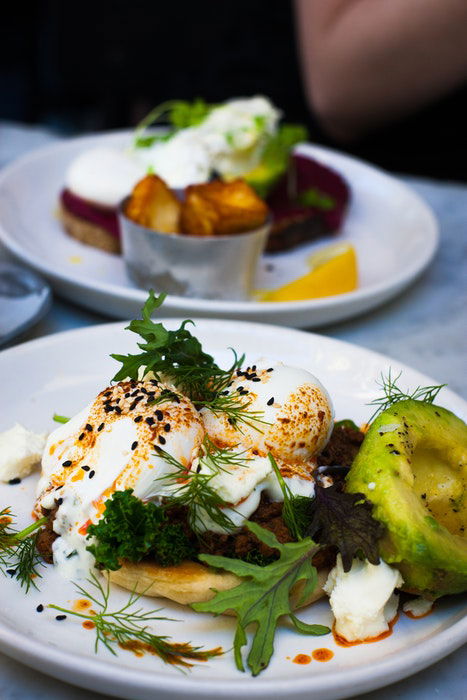
Photo credit Kyle Roxas
Choose an angle that puts your food subject into the best light. A pizza looks amazing from and overhead shot. But you want to show the dimensions of a hamburger or a pancake tower.
Are you taking photos of an all-you-can-eat meal? Step on a chair and take an overhead shot. This lets you incorporate as many plates as possible. It creates the impression of endless food.
If you photograph a cake with interesting layers, shoot from a side or diagonal angle. The latter one allows you to show a small part of the top layers too.
Not sure which angle is the best for your food photography? Try various ones and see which suits your subject.
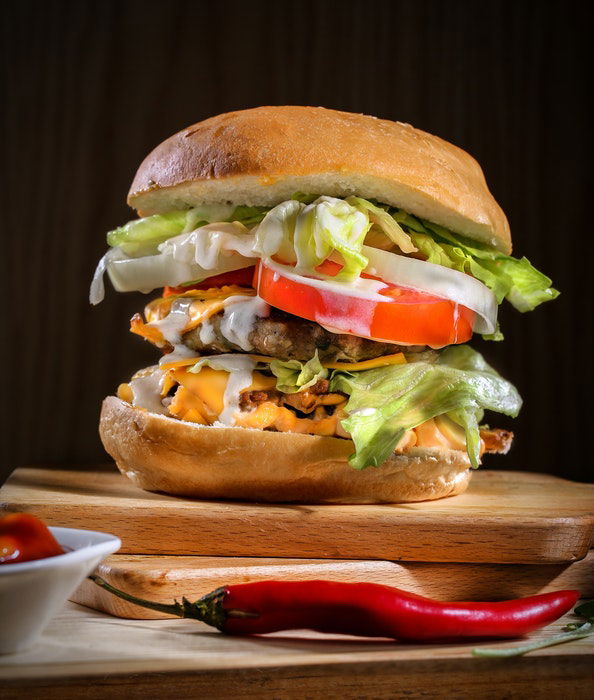
Some food items look better from a wider perspective. Others look more delicious if you zoom into the details. Find a frame that works for your subject and highlights its best features.
You can also decide to leave some empty place in your frame. It gives some breathing space around your subject. This will draw the viewer’s attention to your subject, which is the most exciting part of your photo.
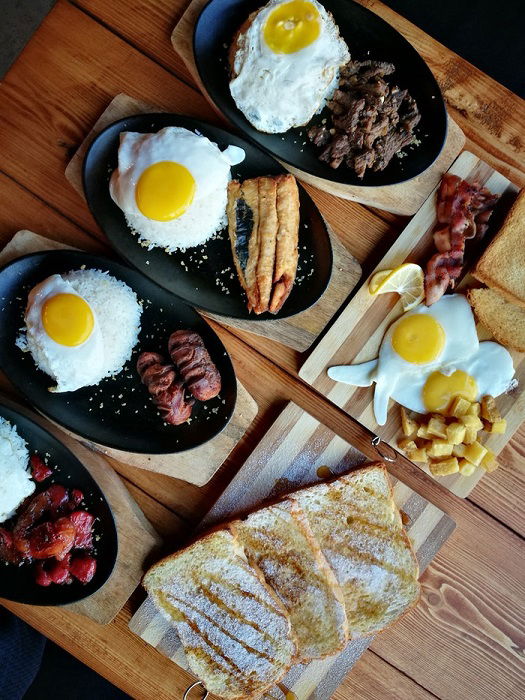
I love telling a story with my iPhone food photography. You can create an atmosphere that makes the viewer look longer at your photo.
If you are doing a good job, they even want to be in your position. They want to be the ones taking that mouthwatering photo and eat that delicious food.
You can tell a story in many different ways in food photography. You can document the process of making the dish with progress photos. I love taking pictures of the evolution of the baking chimney cakes.
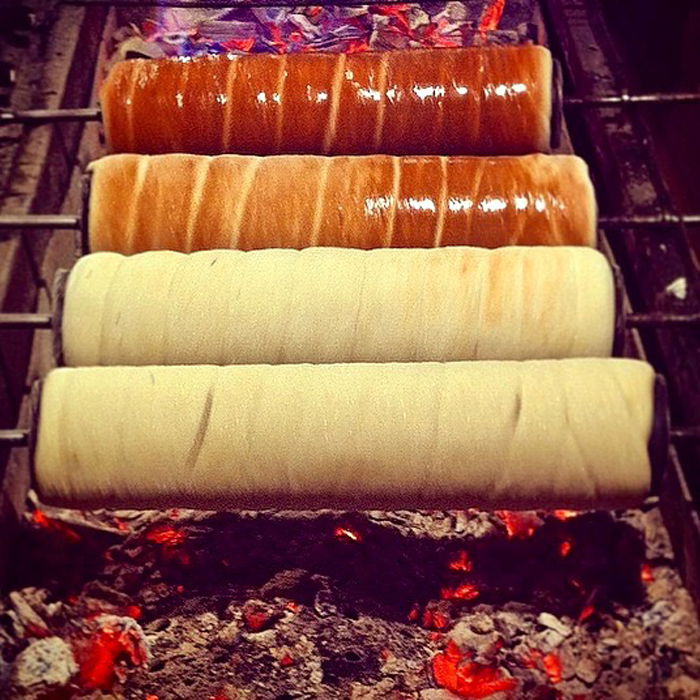
Photo credit Dora Jokkel
You can also create a certain atmosphere. For example, a cup of hot chocolate places on a soft and warm blanket, with a firework in the background. It conveys the message of cosiness and warmth.
Or check out the photo I took in Manarola, Cinque Terre. I broke the rule of using a simple background because the view was breathtaking. I thought I could create the best impression of the place if I photograph my limoncello spritz with this view from the bar.
Whenever I look at the photo, it says ‘summer’ and ‘dolce vita’ all over it. Exactly the effect I was aiming for.
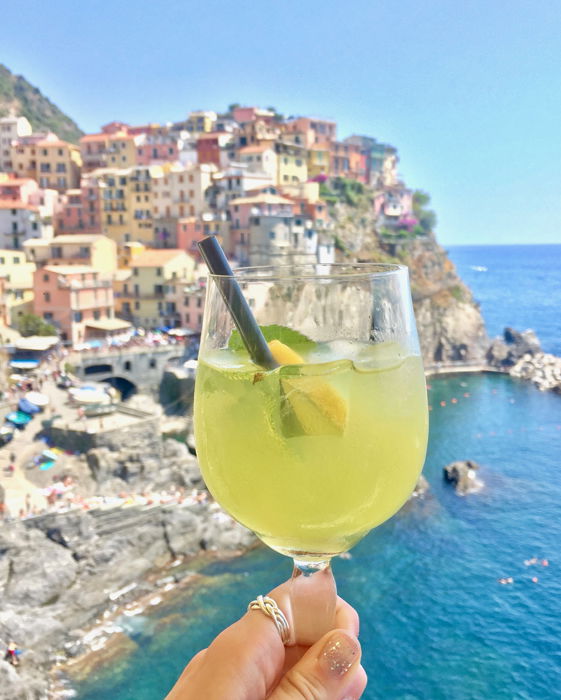
Photo credit Dora Jokkel
Props will make your iPhone food photography more exciting. You can use kitchen equipment, ingredients or cutlery.
Pieces of fruit and spices are very photogenic. Place them around your main subject in an appealing way.
Use props that compliment your subject. For example, design a scene for an apple pie with apple slices and cinnamon powder around it.
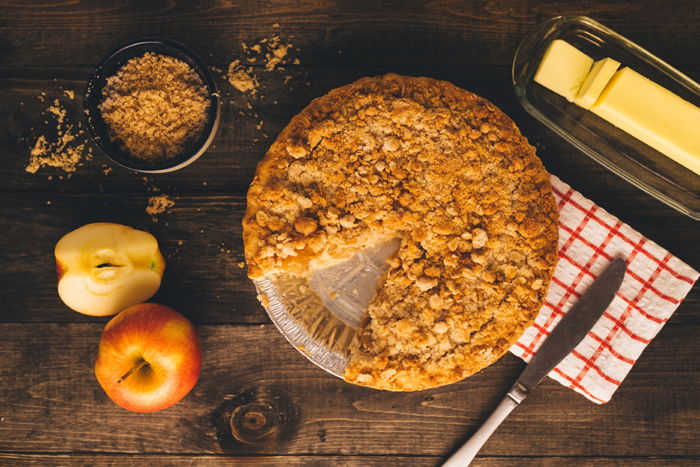
Photo credit Patrick Fore
You can also use props to represent the season. Leaves for autumn or Christmas lights for winter. Flowers are very popular and decorative elements all year round.
A cocktail looks better with a straw in it and a lemon slice on the side of the glass. If you don’t want to create waste, use a plastic lemon and a reusable straw.
Sometimes the best decorations are related to the place you’re having your food. A Sacher cake looks great with a napkin exhibiting the brand’s name and the traditional coffeehouse in the background.
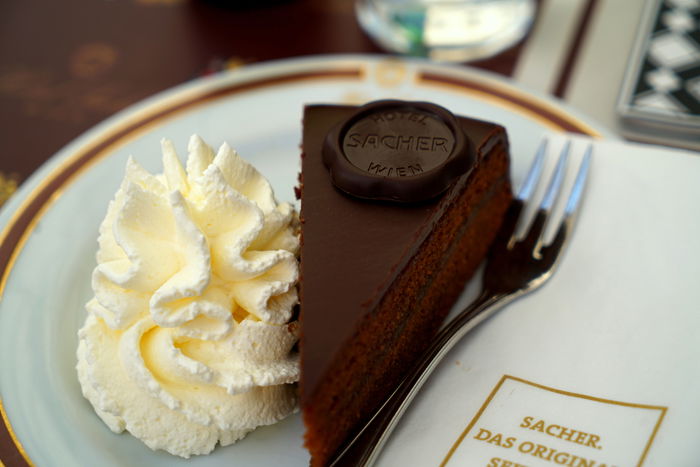
Photo credit Tim Photoguy Unsplash
Always look for interesting details in food photography. You might see a funny pattern in your dish. Or it looks like a miniature landscape from a certain angle.
I took the photo of the cappuccino below by mere accident. I only wanted to document the coffee because a friend of mine recommended the place. When I looked at the final image, I saw the heart in the foam.
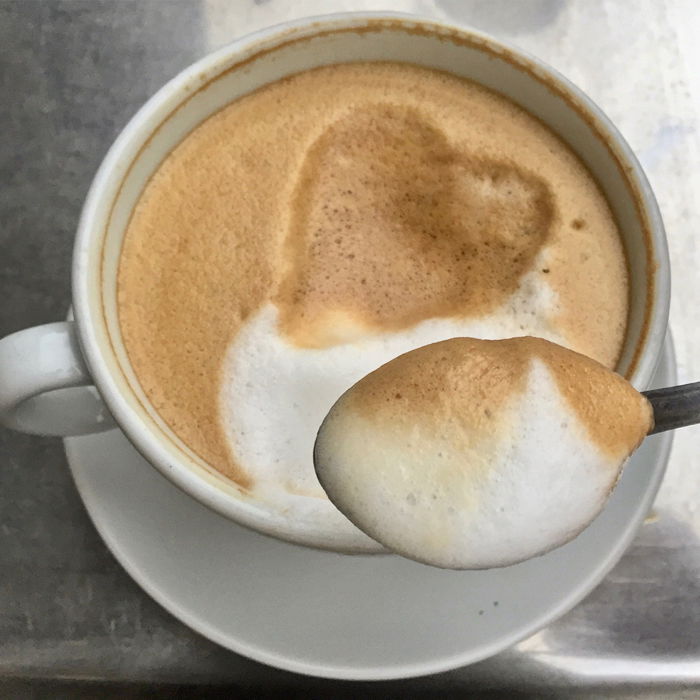
Photo credit Dora Jokkel
iPhone food photography often needs a bit of editing. You can do this in Lightroom or Photoshop. But you can also use photo editing apps such as Instagram or VSCO. Even iPhone has basic tools you can use for editing your food photos.
Aim for a natural, realistic final effect. Adjust colors, saturation, and highlights. You can play with shadows and brightness.
Some filters can give your food photography a nice vintage effect. It’s up to you if you aim for a dreamy or a more natural impression.
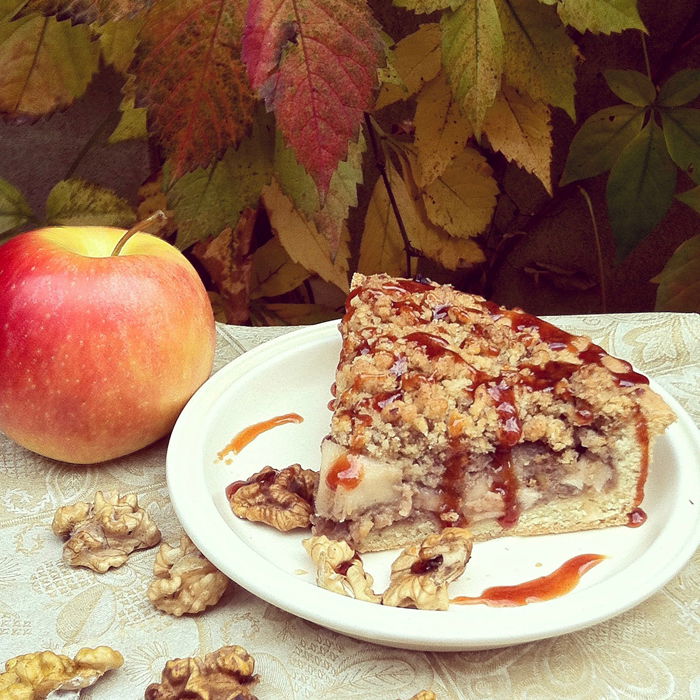
Photo credit Dora Jokkel
Sometimes you cannot avoid people’s hands being present in your food photography. Holding an ice cream or a glass of wine with one hand is normal.
You can even use human hands to enhance your photos. This helps the viewer relate to your foo photography. It’s not only a food item exhibited in a showroom but a real meal with friends.
It’s a popular and fun setup if you ask a few people to pretend to grab the same food at the same time. This makes the viewer think that the dish is very delicious.
You can also refer to a traditional eating method with hands in your pictures. A hand holding a chopstick or an oyster fork makes your image more authentic. It also shows that you have background knowledge of the food you are taking photos of.
Make sure the hands are clean and groomed. Some of my ice cream shots failed because my nail polish chipped, and it looked poor.
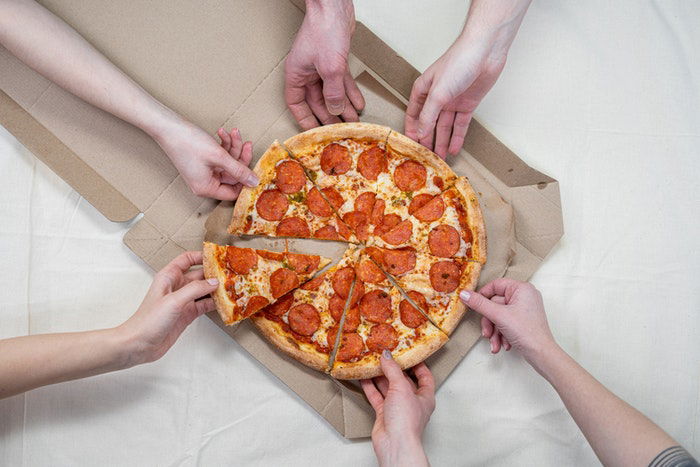
A picture in the picture looks great in landscape and food photography. Ask someone to take a photo of the food scene with an iPhone. Meanwhile, take a picture of the iPhone with the food subject in its focus.
This is a popular method among influencers because it is easy and creative. It also allows the viewer the look behind the scene.
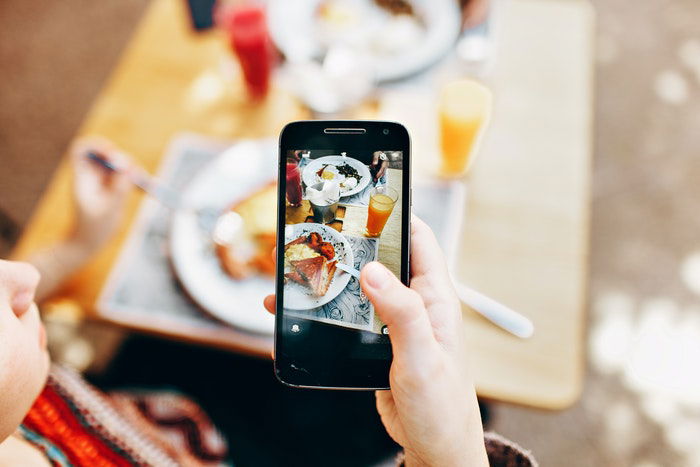
Want to capture some splashing or cracking? Or an ice cream melting?
Use Burst Mode on your iPhone to capture some dynamic action shots. Your device will take 10 photos per second until you keep touching the screen. Then you can select the photos you want to keep and disregard the rest.
You can take photos of milk splashing on your cereal or cupcake getting sprinkled. You could even capture someone biting into a delicious piece of flaky croissant.
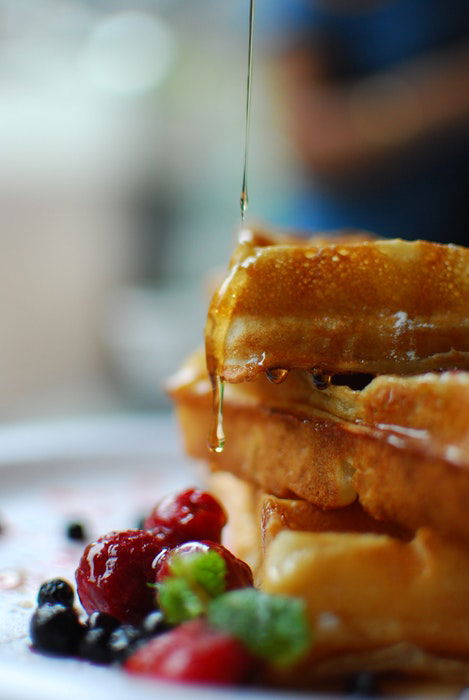
Photo credit Karthik Reddy
iPhone food photography is easy, fun, and you can even eat your subject. Whether you are taking photos at home or a restaurant, you can create mouthwatering food photos.
Follow the food photography tips above and keep experimenting to improve your skills. Bon appétit!
For all the know-how on how to take incredible food photos with simple gear, read our eBook – Edible Images!